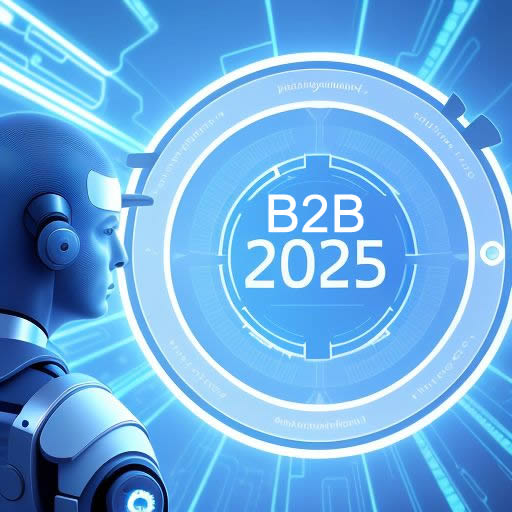Much Too Early Predictions for the B2B Data Industry in 2025
When it comes to business-to-business (B2B) data, companies that want to employ the most recent technologies and trends need always need to have a desire to stay ahead of the curve. Intent data, artificial intelligence (AI), and the dynamics of sales and marketing will continue to have an impact on the environment, as is evident from looking ahead to the year 2025 and predicting what lies ahead. On the other hand, predictions made thus far in advance are comparable to reading tea leaves; they are speculative yet fascinating. Here are some projections about the business-to-business data market that are way too early for the year 2025.
By the year 2025, artificial intelligence will have conclusively established itself as the foundation of the business-to-business (B2B) data sector. Starting from the simple act of processing data, algorithms driven by artificial intelligence will eventually be able to discern sophisticated patterns, anticipate market trends, and even make decisions on their own. The increasing sophistication of machine learning models will allow businesses to quickly and correctly extract relevant insights from massive amounts of data. This will allow businesses to reap the benefits of machine learning.
One of the most significant shifts will be the incorporation of artificial intelligence into each and every facet of the business-to-business data ecosystem. In the future, businesses will rely on artificial intelligence to improve decision-making and speed up operations. This includes predictive analytics that power marketing plans and chatbots that are powered by AI that answer inquiries from customers. Artificial intelligence will also be vital for personalizing business-to-business interactions, which will enable companies to create experiences that are tailored to the preferences and behaviors of each individual consumer. Integration of A.I. technologies will start to come into view, with the sales process, making sales easier if used in the correct ways. Think recording sales calls to address for tone, and interest indicators to act on further, than creating messaging and tactics to align with the sales process in the upcoming days or weeks…
By the year 2025, B2B marketers who are looking to uncover and interact with high-potential prospects will identify intent data as the holy grail. This revolution will take place in the realm of intent data. Using intent signals gathered from a variety of web sources, businesses will have access to information about the intent of prospective customers to make a purchase that has never been seen before. The use of advanced analytics will make it possible for businesses to assess the likelihood that a potential customer will become a client by analyzing subtle indicators such as the number of times a website is visited, the patterns of content consumption, and interactions on social media.
In addition, the combination of AI and intent data will totally transform the way in which B2B marketers will discover and cultivate leads. In the future, artificial intelligence systems will be able to do real-time analysis of intent signals, which will allow marketers to give prospects highly targeted material and personalized messages at every stage of the purchasing process. In addition to increasing conversion rates, this proactive technique will improve the relationships that exist between businesses and the customers they serve.
The customary line between sales and marketing teams will continue to blur in 2025 as businesses move toward a more integrated strategy to client involvement. This will result in a synergy between the two departments. The sales and marketing teams will collaborate more closely in order to design unified plans that appeal to target audiences as a result of the increased in-depth understanding of consumer preferences and behavior that is made possible by analytics powered by artificial intelligence.
Additionally, the growth in the amount of data pertaining to purpose will make it simpler for marketing and sales activities to harmoniously collaborate with one another. It is possible for sales teams to concentrate their outreach efforts and contact with prospects at the appropriate moment with the most relevant message by utilizing intent signals to identify prospects who are demonstrating a desire to make a purchase. In addition to being able to improve the efficiency of sales and marketing operations, this alignment will also result in higher conversion rates and an increase in income.
Lastly, even though it might appear to be hard to anticipate the B2B data market in 2025, there are certain trends and technologies that are already affecting the path that the sector is heading in. The dynamics of sales and marketing, intent data, and artificial intelligence are all going to bring about significant changes in the way that businesses use data to stimulate innovation and growth. These changes are going to lay the stage for enormous changes. As we embark on this journey into the future, there is one thing that is certain: the ability to be flexible and agile will be essential to achieving success in the B2B data market, which is always evolving.
Recent Posts
Unleashing Sales Strategies: Dog People vs. Cat People
As long as there have been people, there has been salesmanship. Whether you're trying to sell a service, an idea, or a product, the three pillars of effective persuasion are knowing your target, establishing rapport, and completing the sale. What if, however, we were...
FOMO and Urgency: Optimizing Sales Potential
Two psychological cues have a big impact in the ever-changing field of sales: the Sense of Urgency and the Fear of Missing Out (FOMO). Businesses can succeed more if they recognize their importance and deliberately include them into the sales process. Let's examine...
Stop Starting Your Presentations Talking About YOU: Customers HATE This
People really dislike this. Imagine yourself in the middle of a conference room full of people who are eagerly anticipating the announcement of a solution that might have a profound impact on their lives or companies. The presenter then proceeds to give a detailed...




